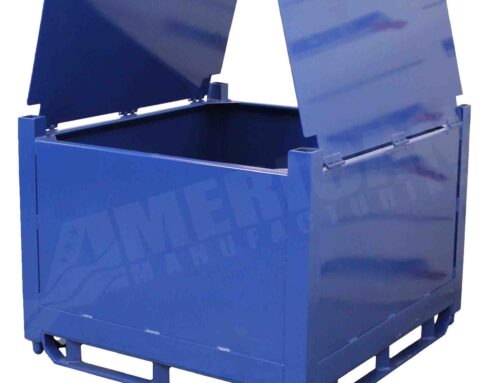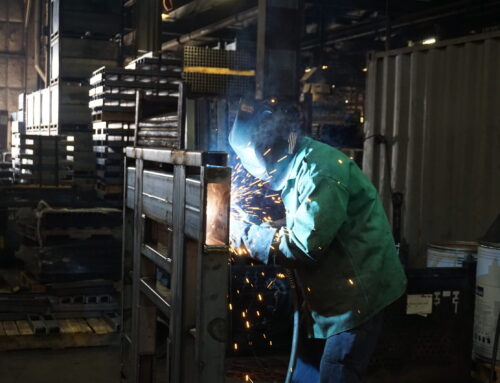Milling machines are essential tools in the industrial world because of their ability to work with heavy parts and shape hard metal. The applications and uses you are looking for in a milling machine will determine which type may be ideal for you. Some machines are designed to work with more general pieces, while others are more specialized for smaller, more complex projects.
Whether your industrial workspace is big or small, many types of milling machines can offer their own advantages and disadvantages. Below, we will examine the differences between vertical and horizontal milling so you can determine which type of milling is right for your manufacturing needs.
What Is Milling?
Milling can be a confusing term because it applies to both a process and a piece of machinery. The process of milling is used in the manufacturing industry to shape components for the production of various goods.
A milling machine is a rotating cutting tool that removes material from a workpiece to shape a part. In doing so, specific parts or components for a project can be constructed using subtractive manufacturing since the rotating tool cuts away excess material to achieve a certain function or look, rather than using additive manufacturing as a 3D printer does.
During the milling process, both the workpiece and the cutting tool rotate; however, their range of motion and direction will vary depending on whether a horizontal or vertical mill is being used. The terms “vertical” and “horizontal” tend to refer to the orientation of the cutting tool or spindle. Depending on your manufacturing needs, these two common milling machines offer different qualities and unique characteristics.
In general, most milling machines have been designed so that heavy-duty materials that are difficult to cut, like titanium, copper alloys, and stainless steel, can be worked with more efficiently. By understanding which type of milling machine is better for your next manufacturing project, you can ensure you’re using the best tools possible to get the work done and minimize the risk of making any costly mistakes.
What Is Vertical Milling?
Vertical milling is a process of machining where the cutting head—the spindle—is oriented vertically, therefore moving up and down in a vertical direction. This type of milling is generally used for roughing operations on materials like steel, aluminum, and brass. The spindle is usually perpendicular to the surface of the material, while other parts of the machine shift along certain axes so the material can be moved in the right location to be milled correctly.
There are two types of vertical mills, which are as follows:
- Bed Mill: This type of mill machine can only move material along an axis horizontally, while the spindle remains restricted to the vertical axis and will move up and down as needed. Combining these two movements allows for various depths and shapes to be milled, making this type of mill more suitable for heavier and larger pieces.
- Turret Mill: The spindle stays in a fixed position on this type of milling machine, while the bed portion that holds the material can move vertically or horizontally. A turret mill offers more versatility because materials can be manipulated to move in multiple different directions. However, turret mills are better suited for projects with smaller pieces, since two-axis movement is more challenging when working with larger pieces.
Pros and Cons of Vertical Milling
There are advantages and disadvantages to using a vertical mill, including its versatility and accuracy. Overall, vertical milling machines are typically more affordable than horizontal ones, and they take up less floor space, making them ideal for smaller shops. They also offer other benefits, including:
- Simplicity: Generally, vertical mills are far less complex than horizontal ones. This is because vertical milling machines are relatively easy to learn, operate, and maintain. They also don’t require any additional fixtures, nor do they have to be geared to move in two different directions.
- Cost: Vertical milling machines are much more affordable than horizontal ones because they have smaller casings with fewer, less complex internal parts.
- Availability: Vertical milling machines are extremely common, so they’re easy to replace, and parts are easy to find when maintenance is necessary.
- Space: Vertical mills take up less floor space in your warehouse or workspace, so they are better for small shop owners.
Regarding disadvantages, a vertical milling machine won’t have as fast of an output rate as horizontal mills do. They are also limited to only working with smaller pieces, making it challenging for those who need to work with larger parts for certain projects. With this in mind, it’s always best to keep the logistics of your next project in mind before deciding on a vertical mill machine.
What Is Horizontal Milling?
Horizontal milling is a process of machining where the spindle is oriented so that it moves in a horizontal direction. Cutting tools usually sit parallel to the surface of the material, and they can be smaller yet thicker, allowing them to perform deeper cuts. This type of milling can be used for both roughing and finishing operations on materials like steel, aluminum, brass, or plastics.
Unlike vertical machines, horizontal milling machines don’t use a fixed spindle; instead, the cutting heads can rotate like a circular saw, allowing multiple cutters to be installed and the machine to cut at various angles.
Pros and Cons of Horizontal Milling
Horizontal milling does offer some advantages over vertical milling, including the ability to cut larger pieces of material and perform heavier cuts more efficiently. Other benefits of horizontal milling include:
- Capability: These types of milling machines can work with a larger production capacity. They’re able to handle materials that are larger, heavier, and bulkier, and they can make deep cuts in these sturdy materials. Complex and multi-sided projects can also be completed via horizontal milling.
- Speed: Horizontal milling machines offer higher output and quicker turnaround times because they can make more than one cut at a time, cutting much faster than a vertical mill could. Additionally, even with a fast speed, horizontal mills remain extremely precise with their cuts, making them ideal for long-running or highly-detailed projects.
- Durability: Because horizontal mills can handle more heavy-duty products, they are made to be both durable and long-lasting.
There are still some disadvantages to horizontal milling, however. Horizontal mills are less common than vertical ones, meaning that finding certain parts may be a challenge if a repair is needed. Additionally, horizontal mills are a lot more expensive because they perform at a higher precision quality. These mills will also take up more floor space, so they are better suited for manufacturing companies with larger shops.
Choosing a Milling Machine
While there are advantages and disadvantages to both types of milling, the milling machine that works best for you will depend on your manufacturing needs. As you choose a milling machine, consider what type of work you need done and your budget. In addition, you’ll want to consider floor space and what storage capabilities your shop has.
At American Manufacturing, we have two CNC vertical mills in house to use on various projects. To learn more information, click here to see how our vertical milling machine works.








Leave A Comment